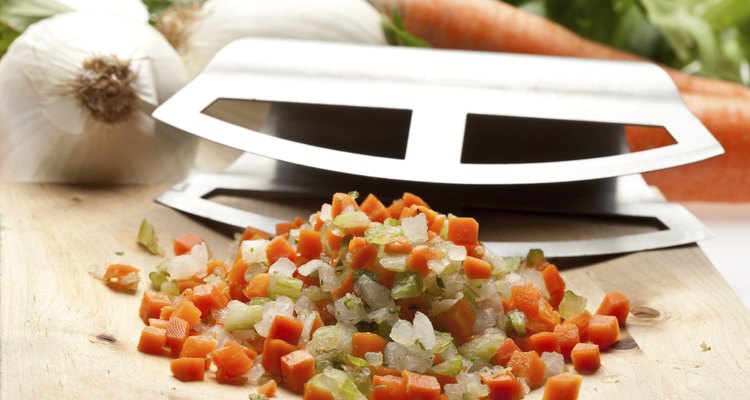
Luca Fabbian/iStock/Getty Images
Some of the most elegant and sophisticated dishes in the classical French repertoire are built on an understated base of simple, everyday ingredients. The mixture, consisting of 2 parts onion to 1 part each of celery and carrot, is known as "mirepoix" in the French canon. The same ingredients are also used in Italian cooking, to provide a similar underlying flavor. In the cucina italiana, the mixture is known as "soffritto," or less commonly as a "battuto."
Working With Soffritto
You use a soffritto in most of the same ways as mirepoix. If you're roasting a bird or a large cut of meat, you can simply add it to the roasting pan without any further preparation. The soffritto will cook along with the roast, flavoring the drippings and making a fine sauce or gravy. In soups, you might choose to gently fry the aromatic vegetables in a small quantity of butter or olive oil to mellow their flavor before proceeding. In slow-cooked dishes, the soffritto is typically cooked for a long time at low temperature until it's soft, and its flavors are rich and deep.
Freewheeling Variations
Italians do bring a rather different perspective to the use of soffritto. The French tend to settle on a single, canonical way to do things in the kitchen. Italians are more freewheeling, so you'll see variations in the basic combination between cooks and even between dishes. The celery might be replaced with fennel, for example, or the onions with garlic, if those ingredients are better suited to a given dish. Even finely minced prosciutto, pancetta or anchovies might go into the pan to provide the mixture with an extra savory kick.
Related Articles
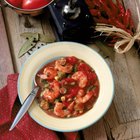
Difference Between Gumbo and Etouffee

How to Make Filipino Pork Adobo
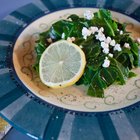
How to Cook Chard

Uses for Major Grey's Chutney

How to Make Pho Soup

How to Make Irish Style Boiled Potatoes

How to Make Salisbury Steak Using Cubed ...
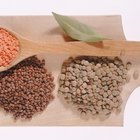
What Do You Season Lentils With?

What Herbs Go With Veal Chops?
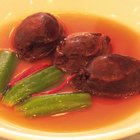
How to Cook Abalone
How to Season Sauerkraut

How to Make Pico de Gallo

How to Make Stuffed Derma

How to Make Filipino Chicken Adobo

How to Make Fresh Clam Sauce
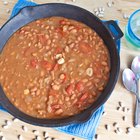
How to Make Ranch-Style Beans

How to Eat Fennel Seeds
4 Quick and Easy Pork Chop Recipes

What is Rapeseed Oil?

Classic Russian Spices
References
Writer Bio
Fred Decker is a trained chef and prolific freelance writer. In previous careers, he sold insurance and mutual funds, and was a longtime retailer. He was educated at Memorial University of Newfoundland and the Northern Alberta Institute of Technology. His articles have appeared on numerous home and garden sites including GoneOutdoors, TheNest and eHow.
Photo Credits
Luca Fabbian/iStock/Getty Images